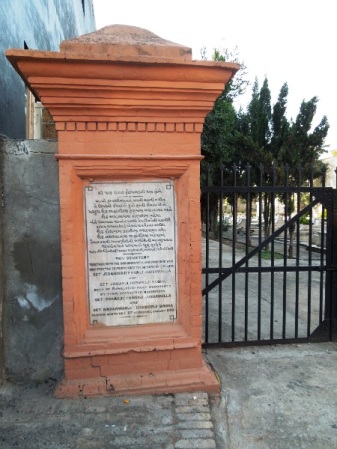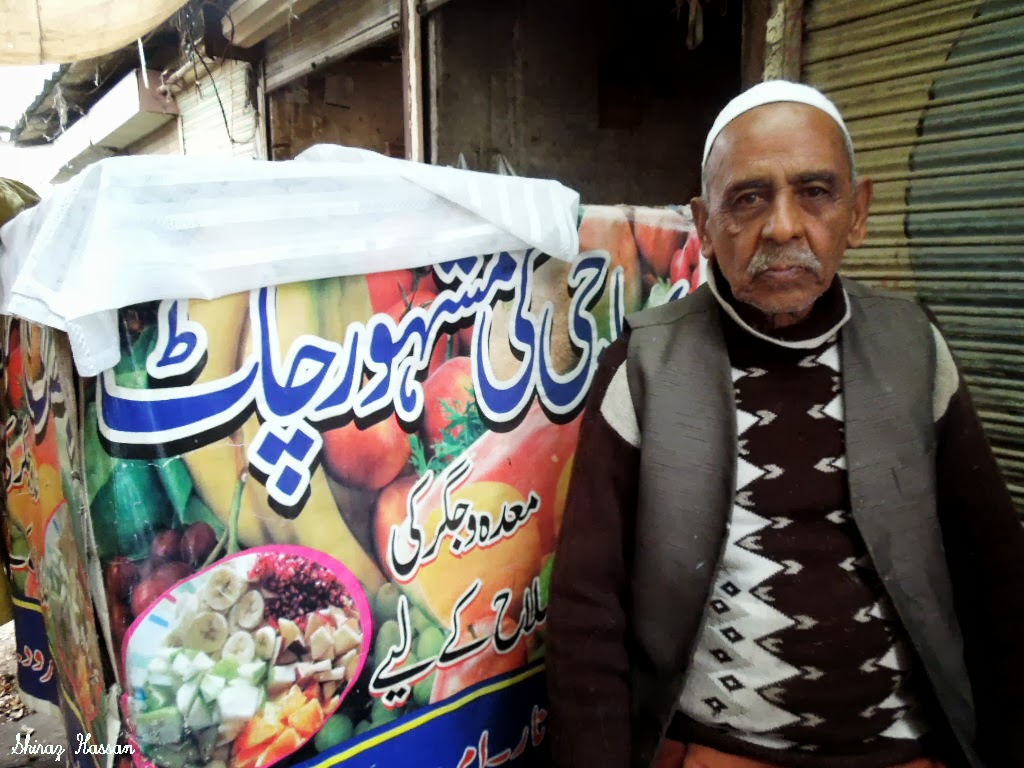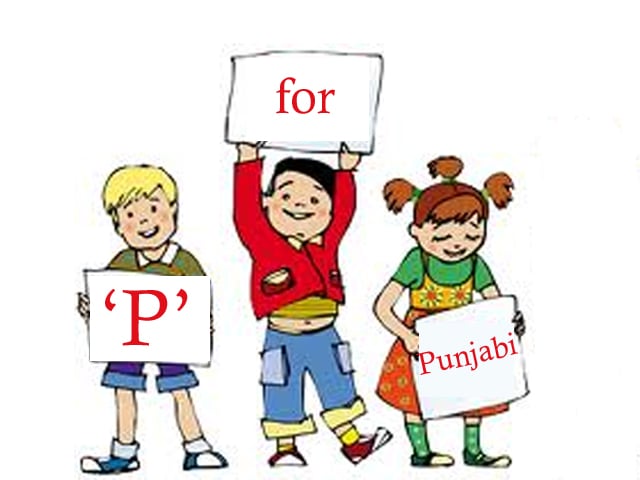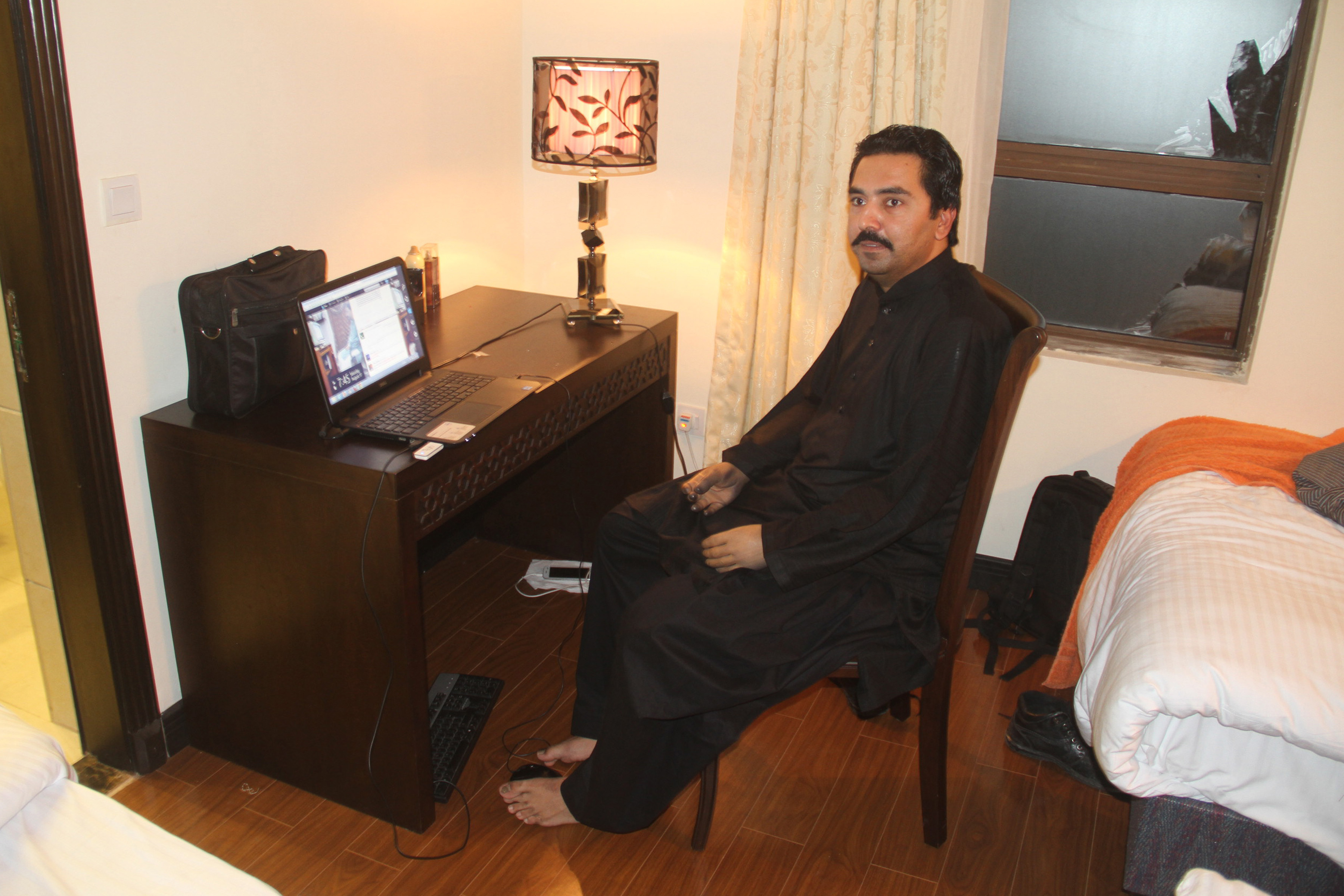
Rawalpindi: Parsi places of worship... still exist!
I expected an old building in ruins surrounded by garbage, but was pleasantly surprised by its clean serenity.
I was talking to the 70-year-old man, trimming grass at the Parsi place of worship, when he said,
“I have been working here for more than 20 years and during this time none of the elders or children have ever spoken harshly to me. I am their employee and they are always polite to their workers.”
 An old gardener tending to the garden at the Parsi place of worship in Rawalpindi. Photo: Shiraz Hassan
An old gardener tending to the garden at the Parsi place of worship in Rawalpindi. Photo: Shiraz HassanI guess the old man noticed my intrigued expression because he continued with a smile,
“One day some community leaders visited while I was having my lunch. I was about to leave it halfway and get up, in order to serve them. They simply asked me to finish my lunch, rest a while and then come serve them food. That is how they always were.”
I have a keen interest in heritage buildings and old architecture, and so a couple of months back when my friend told me about the existence of a Parsi temple located somewhere on Murree Road, Rawalpindi, I knew I had to visit the site.
I began to search for this place. I asked around, spoke to people residing in the area but no one seemed to know of any such place.
I find it sad that most people living in Rawalpindi, and other cities as well, have become too busy in their own lives and do not know much about their own locality; sometimes not even about sights that are right next door. It is no wonder then, that this sheer neglect and indifference is turning our historical landmarks into ruins, right before our eyes.
Eventually, after asking many people and searching the city, I finally managed to find out the exact location of the place and one Sunday morning I set out to see it for myself. As many of you probably know, Murree Road is the commercial hub of Rawalpindi. There is a sprawling jewellery market near the Benazir Bhutto Hospital. Hence, it is difficult to imagine that a historical landmark could exist amidst this entire hubbub.
However, as I soon found out, hidden behind these lavish jewellery shops, there was indeed a Parsi place of worship. I knew that according to Parsi traditions it would be known as a Fire Temple and I was excited to finally have a chance to explore it in detail.
As I got closer to the location, I came across a commercial area and turned into the lane behind it. I had visited several old temples and Gurdwaras before; I expected an old building in ruins, its architecture in shambles, its walls crumbling and the ever-present foul smell of garbage in its grounds.
 A well-maintained red brick single-story building housed the Parsi place of worship. Photo: Shiraz Hassan
A well-maintained red brick single-story building housed the Parsi place of worship. Photo: Shiraz HassanMuch to my pleasant surprise, I found myself face-to-face with a completely different scene. I was standing before a red-bricked single story building which looked clean and well-maintained. The path leading to the building was lined with rows of evergreen and date trees.
It was quite literally a treat for the eye and I was left awestruck.
 The path leading to the temple was lined with trees. Photo: Shiraz Hassan
The path leading to the temple was lined with trees. Photo: Shiraz HassanAs I looked towards the right side of the building, I saw an old colonial style building and before it there was a gate leading to the Parsi graveyard. The building was surrounded by a lush green lawn and an old man was busy tending to the garden, digging the soil and cutting the grass. It was one of the most peaceful scenes I have ever come across.
 The Parsi graveyard, next to the place of worship, was also clean, organised and peaceful. Photo: Shiraz Hassan
The Parsi graveyard, next to the place of worship, was also clean, organised and peaceful. Photo: Shiraz HassanThe stone plate at the gate of the graveyard read:
“This cemetery, together with the buildings and compound wall, was erected to perpetuate the memory of the late Seth Jahangiriji Framji Jussawala and Seth Jamasji Hormasji Bogha – both of the Rawalpindi Parsi merchants by their respective grandsons, Seth Dorabji Cowasji Jussawala and Seth Nasarwanji Jehangiriji BoghaShahshai in the month of Tir 1367, January 1898.”
 The stone plate at the entrance to the graveyard. Photo: Shiraz Hassan
The stone plate at the entrance to the graveyard. Photo: Shiraz HassanThe graveyard also seemed very clean and serene.
I asked the old gardener if the temple was still functional. He nodded his head saying,
“Yes, there are some 30 to 40 Parsi families in Rawalpindi and whenever someone passes away in their community they perform the funeral and religious rituals here.”
I knew that there was a Parsi community in Rawalpindi comprising mostly of merchants, some hundred years ago; but it was indeed news for me that they still lived in Rawalpindi even today.
The gardener also told me that this place belonged to the owner of a famous brewery company and that they often visited in order to pay homage to their elders buried in the graveyard.
I also noticed that the doors to the building were locked and that the premises seemed well taken care of.
 Photo: Shiraz Hassan
Photo: Shiraz HassanWalking back, I felt immense joy and relief that a place of worship, which belongs to a minority community of Pakistan, was well managed and looked after.
All I wished for was to see tolerance towards all other religious minorities in Pakistan and prayed that we are able to live together in harmony, peace and prosperity.




COMMENTS (32)
Comments are moderated and generally will be posted if they are on-topic and not abusive.
For more information, please see our Comments FAQ